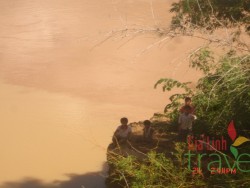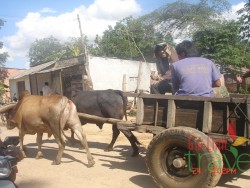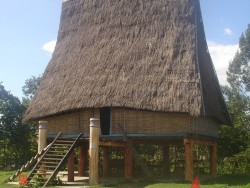Kontum
Kon Tum


Kontum

Kontum
Essentially the most northerly of the three towns at the Highland plateaux, the provincial capital of Kon Tum is situated on the banks of the Dakbla River approximately 900km from Ho Chi Minh City and around 200km from Qui Nhon. It’s a pleasing, unassuming form of place. There are neatly over six hundred ethnic minority villages and hamlets in the province, mostly Ba Na, Xo Dang, Gia Trieng and Gia Rai. A sizable proportion of the population has transformed to Catholicism.
The French used Kon Tum as their administrative centre for the Central Highlands and built a large prison to subdue the local population. They deployed the prisoners as forced labour to build Highway 19 – needless to mention, many died.
One of the crucial best-recognized international guidebooks has so much to say approximately Kon Tum’s historical prison, concluding that the “local tourism authorities have now not fairly grasped the industrial potential of this would-be warfare museum.” Had the authors checked, they’d have identified that the prison was once demolished after the warfare and completely rebuilt between 1998 and 2000 via the tourism division to capitalise upon an unwitting tourist market. Oops!
When you travel with Gia Linh Travel, you get correct information. As we’re not eager about ‘faux’ sights, we provide the prison a miss.
Then again, the city has two French-built church buildings that no doubt shouldn’t be missed. The small, whitewashed Tan Huong Church was once built around the 1850s. It stands on stilts, even if it’s not straight away obvious. Inside, it’s a gem. Most of the stained glass is original, and there’s an excellent vaulted ceiling. The roof has been replaces, but the original ‘fish scale’ tiles can be seen at the tower.
The better-known ‘Wooden Church’ used to be built in 1913, and has been carefully restored. The stained-glass window includes both Christian and local imagery.
The Bishop’s Palace isn’t open to the general public; however it’s worth a look from outside.
While in Kon Tum, we encourage our guests to discuss with the town’s Ba Na orphanage. It’s a poorly funded charitable basis; however the children are well cared for in spite of the quite Spartan surroundings. You’ll get a particularly warm welcome, and they’ll get a good donation on your behalf, a transaction that sends everyone away happy.
The main attraction of the area around Kon Tum is dozens of easily obtainable ethnic minority villages. Guests can walk via ethnic communities, meet the folk and enjoy their day by day life. You’re most unlikely to run into beggars or different nuisances: even the children don’t cluster around or pester strangers. People are very pleasant, and happy to welcome guests into their houses. Homestays are available.
‘Rafting’ down Dakbla River in an inflatable dingy, a riverside picnic, swimming, dinner within the Rong space of a Ba Na village adopted by wine and dialog with the locals typifies the experiences offered by this little-known area and its easygoing, good-natured people.
If you want to get further away, there are plenty of good hiking routes taking you thru sexy U. S. a .side and throughout precarious bridges to achieve extra far off villages. Lodging will perhaps be in the local ‘Rong’ house. You need to be versatile and adaptable, although – the local authorities have differing ideas about what’s allowed and what isn’t, that’s why you need one in every of our professional guides to easy the way in which!
